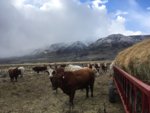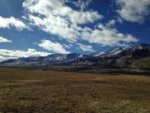Hello nutters!
I just had a question on recommend first steps when harvesting trees from nature? These are all Juniper trees. I live in grow zone 6a at the base of the Steens mountains it can be VERY windy so I do my best to provide protection from fatal drying winds. Anyway haven't harvested anything yet of course wrong time of year but might as well learn and plan now? Any advice would be great!
Thanks in advance!
I just had a question on recommend first steps when harvesting trees from nature? These are all Juniper trees. I live in grow zone 6a at the base of the Steens mountains it can be VERY windy so I do my best to provide protection from fatal drying winds. Anyway haven't harvested anything yet of course wrong time of year but might as well learn and plan now? Any advice would be great!
Thanks in advance!



